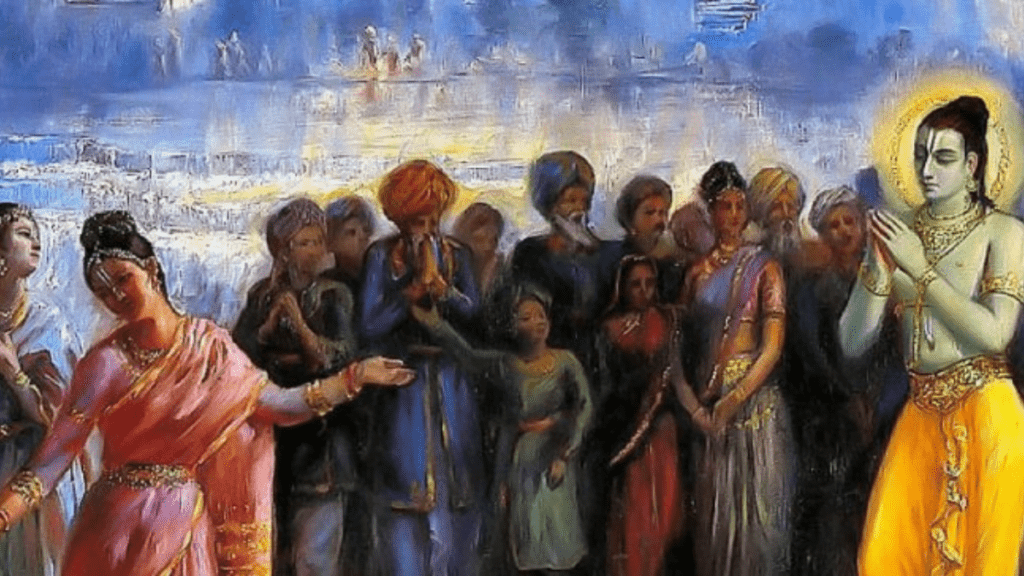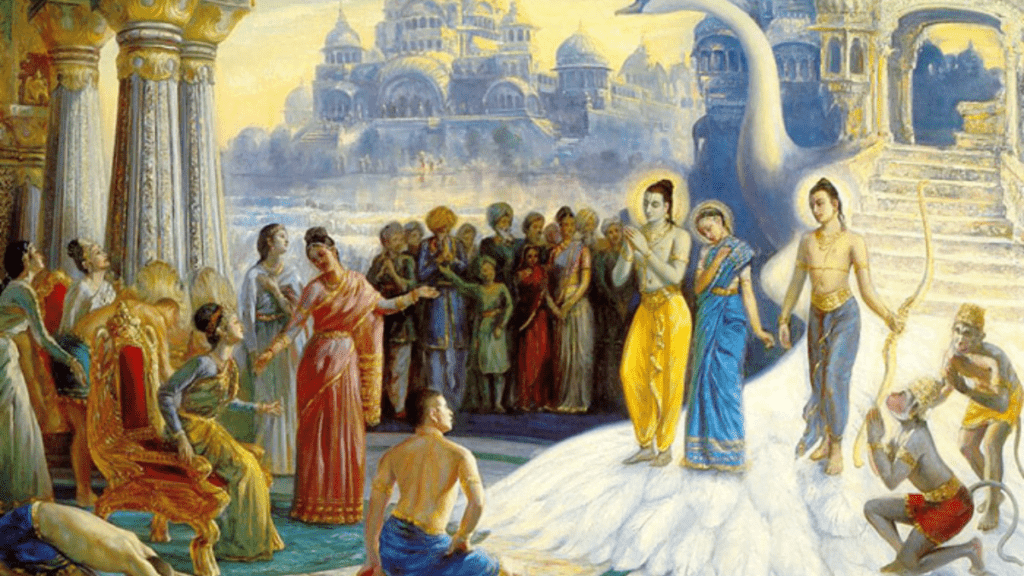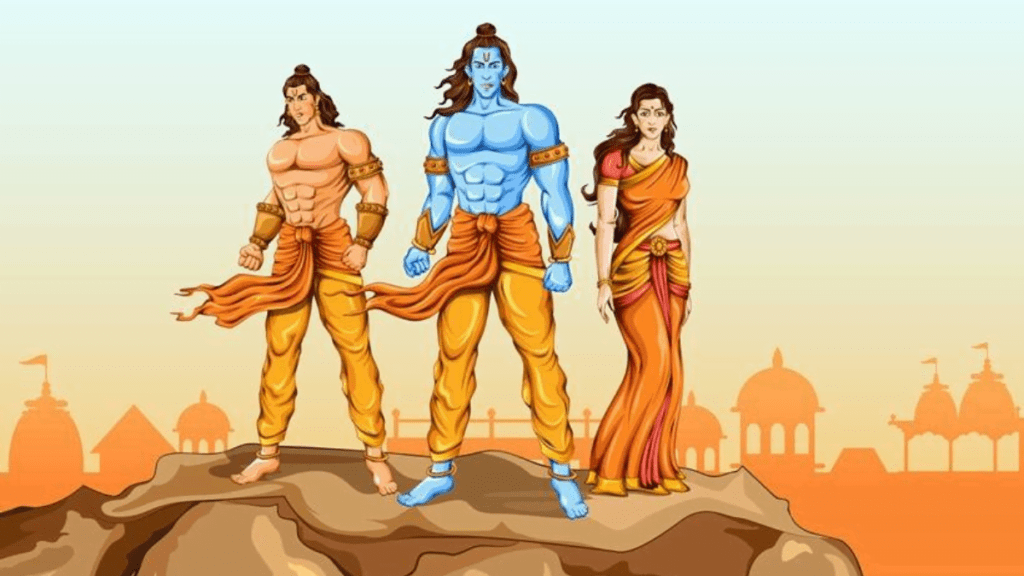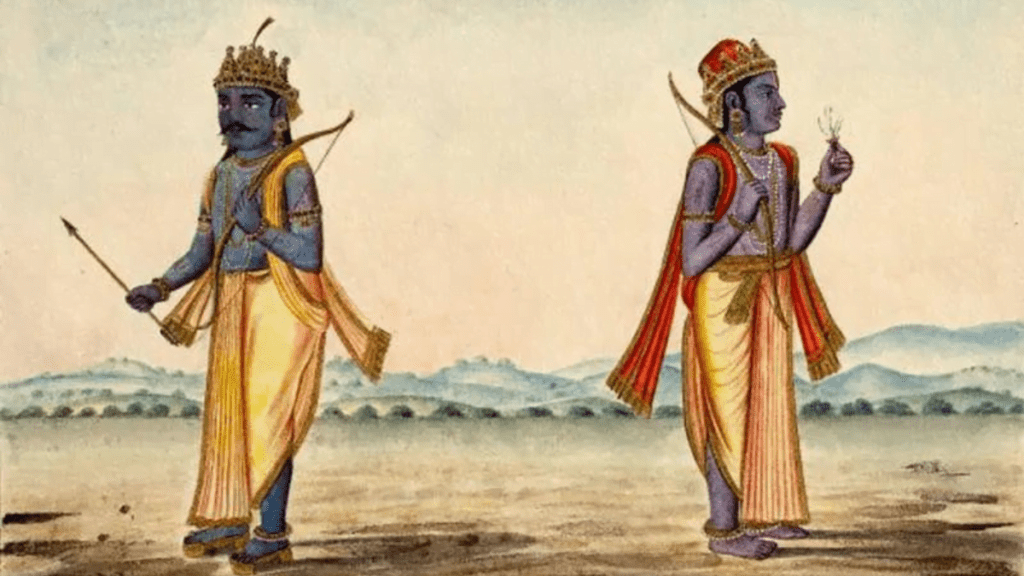Every religion has its story of bravery, perseverance, and victory of virtue over evil. In Hinduism, it’s Ramayana and Mahabharat. This article throws light on some events of Ramayana and unfolds one of the most curiously asked questions, “what happened to Ayodhya after Rama?”
Our research found that people have multiple versions of the story. Each story is different from another, and everyone claims that their story is correct. This happened because Ramayana is an ancient heritage written thousands of years and passed through multiple hands, adding people’s perspectives to the real story.
Then we have Valmiki’s Ramayana, Kalidasa’s Ramayana, Adhyatma Ramayana, Ananda Ramayana and so on. Naturally, predicting the right story is impossible, and whatever we quote will contradict.
So, we brought two widely discussed aspects of Ayodhya after Rama with our opinion of which one has a possible chance of being correct. Read through the end, and you can figure it out yourself.
The event of Lord Rama's death

Death is not the correct term to use because God never dies. It’s widely believed that whenever evil overpowers good, Vishnu Avatars appear on Earth to restore Dharma and return to Vaikunta after achieving their goals. The same goes for Ramayana, Mahabharat or any other incidents.
People say that once Lord Ram voluntarily entered the Sarayu River and disappeared. This divine event is often described as the return of lord ram. The story is mentioned in Padma Purana and many other Hindu scriptures.
So, what happened to his kingdom after he returned? Remember, he had two kids, Luv and Kush, who grew to be great rulers like their father.
Two popular stories of Ayodhya after Rama

As mentioned, there are two popular beliefs describing the Ayodhya after Rama; let’s discuss them individually.
Belief No. 1
Soon after the return of Lord Rama, many events happened in Ayodhya. Rama’s elder son Kush took over the throne to rule Ayodhya. He wasn’t a great king like his father and was believed to have quarrelled with Nagas.
He ended up in a fight with Nagas and lost the battle, bringing Raghuvanshi’s fame of not defeating in a war to an end. He lost his life to a demon named Durjaya. After Kush’s death, his son, Atithi, became the successor to the throne and continued to rule Ayodhya.
Also, it’s said that before Rama left for Vaikunth, he made Hanuman promise to remain on Earth and take care of us until Ramayana was recited. To date, Hanuman fulfils his promise and continues caring for Mother Earth.
Contradictions
Many believe that Kush was a strong king, and his defeat and death from a mere Demon is unacceptable. Also, the Nageshwarnath temple, said to be built by Kush with the help of king Vikramaditya, doesn’t fit anywhere in this story.
Online statements and comments justify that many audiences don’t agree with this story. However, please understand another part before arriving at a judgement.

Belief No. 2
Luv and Kush grew up in exile and were great rulers with similar capabilities to their fathers. Luv, the younger brother, was inaugurated with the kingdom of Kushavati (modern-day Kushinagar) and Kush continued to rule his part of the kingdom from Shravasti.
Lord Rama were four brothers, and the other three brothers, Laxman, Bharat and Shatrughan, rewarded their sons with their kingdoms. They all were believed to be great rulers, but very little information was known about them.
Ayodhya became abandoned soon after everyone left to take care of their kingdoms. Later, when king Vikramaditya found Ayodhya, it was a mere forest with ruins, historical temples and buildings. It took much time and significant research to find information and sites that connect to Lord Rama and his life.
However, Lord Rama’s sons must have visited Ayodhya for a pilgrimage. On one such visit, Kush married Naga’s princess and constructed a shiva temple called for her called Nageshwarnath. That is how it’s believed to be built by Kush with the help of his wife’s father, King Vikramaditya. Even now, the temple is located in modern-day Ayodhya, showcasing proof of this belief.
Hanuman maintained ties with Lord Rama’s sons and continued to protect them against those demons willing to take advantage of Lord Rama’s absence. Hanuman killed all those demons and helped the brothers to maintain peace and harmony in their kingdom.
Contradictions
This belief sounds more accurate to most people and us. As many say, Kush being defeated and killed by demons is not justified as he was strong, and with Hanuman protecting them, they can’t face defeat.
There are multiple proofs of this part of a story, like the Nageswarnath temple, Kushinagar, etc.
Kings of Ayodhya after Rama

Ayodhya was abandoned when everyone left to rule their kingdom. However, it didn’t remain abandoned for an extended period. One night Kush couldn’t sleep properly, and the goddess of Ayodhya appeared in his dream requesting to return to the old capital of Ayodhya.
The following morning Kush announced his dream and left for Ayodhya with his army. Soon after arriving, he restored the capital, and soon it again came to life and splendour. He married Kumudavati and had a son Athithi from her.
Kalidasa writes that 24 kings, including Kush, ruled Ayodhya. But the Raghu Vamsa ended because the 24th king AgnivarNa lived a life of pleasure and died because of his bad habits. However, he mentions that his queen was pregnant at the time of his death and became the princess on behalf of the unborn son. But the poet ends it here.
Conclusion
Ramayana is among the oldest scriptures that have many versions and beliefs. It’s almost impossible to justify what is right and what is wrong. The second belief sounds more accurate, which many people trusts.

